
“How are we to value physical spaces in a world that continues to prioritize its virtual counterparts?“ - Grant Yun

“How are we to value physical spaces in a world that continues to prioritize its virtual counterparts?“ - Grant Yun



SPACES, Grant Yun’s latest body of work, thoughtfully investigates the profound transformations in our built environments driven by technological innovation, automation, and shifting labor paradigms. Created over several years, Yun’s vector-based illustrations reflect critically upon how exponential advances in artificial intelligence, remote work, digitization, and data infrastructure have reshaped the relationships between humanity, productivity, and physical space.
Throughout the past century, society’s evolving needs have radically altered urban and suburban landscapes, rapidly changing how we interact with our surroundings and redefining what we deem essential. Yun specifically highlights the rise, and subsequent questioning of commercial office spaces, once icons of economic vitality, now increasingly symbols of ambiguity. As artificial intelligence and digitization blur the boundaries between work, identity, and culture, Yun raises critical questions about value: How will physical spaces retain their relevance in an increasingly virtual world? Who benefits from this profound shift, and who is left behind? What does this mean for our collective understanding of ownership, identity, and productivity?
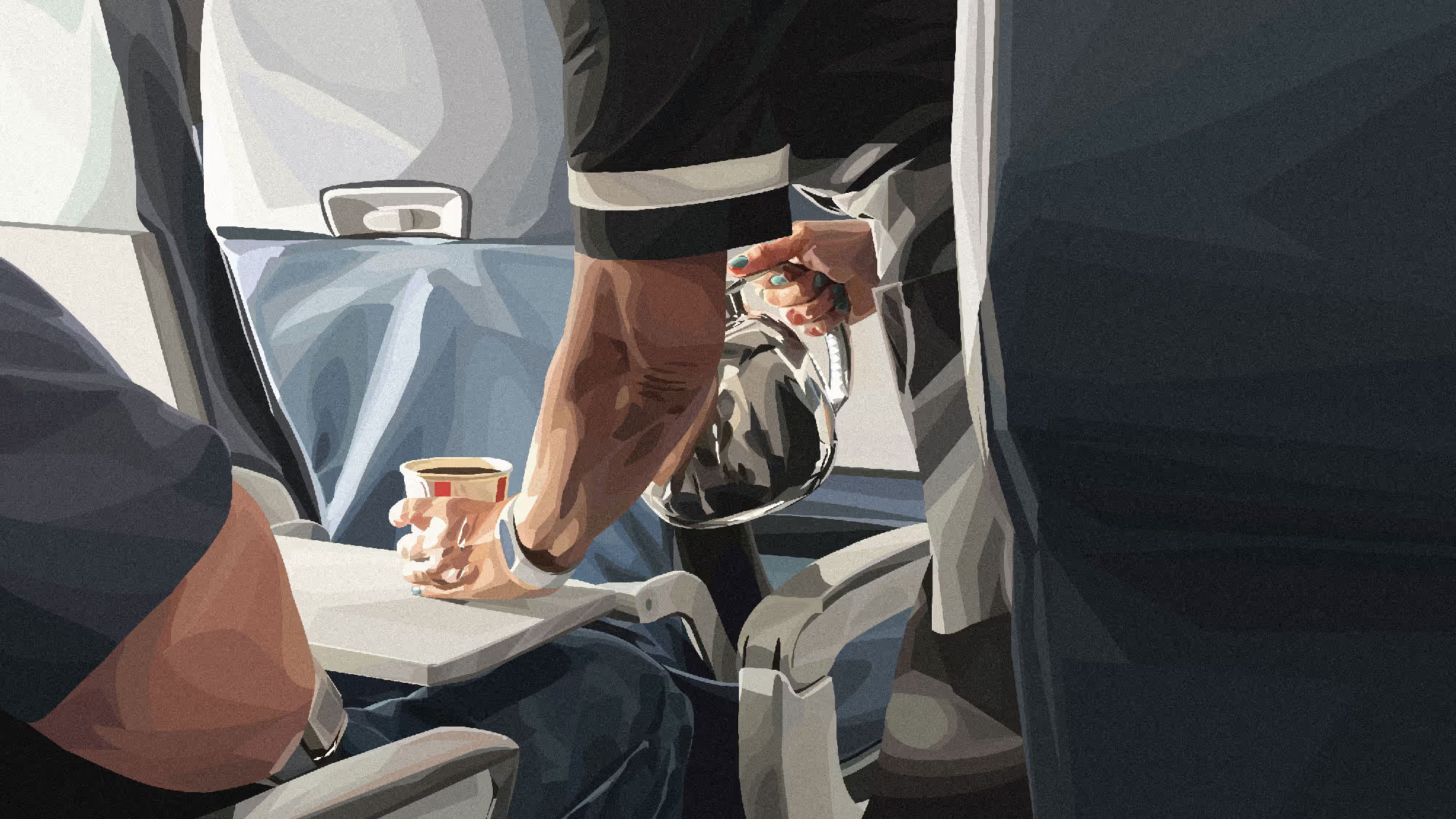
Yun’s creative methodology is deeply rooted in photographic observation and technologically mediated reinterpretation. Beginning in 2014, Yun captured thousands of photographs across the United States using various cameras and personal devices. These photographic archives became foundational references, informing his meticulously crafted illustrations. However, marking a significant evolution in his practice, Yun began collaborating directly with artificial intelligence, exploring how commercially available AI models could enhance, challenge, and reinterpret his visual and conceptual vocabulary.
Describing this technique as "AI sketching," Yun utilized text-to-image, image-to-image, and image-to-text methodologies, continuously refining his works through iterative exchanges with machine intelligence. This process yielded unexpected insights into how human perception, biases, and memory shape interpretations of architectural and spatial elements. Yun’s distinctive style, balancing minimalism and photorealism, purposefully leaves interpretative space for viewers’ imaginations, mirroring the very principles of AI-generated output. By deliberately ceding partial artistic control to artificial intelligence, Yun explores how computational perspectives reflect our human assumptions about space, mood, and narrative.


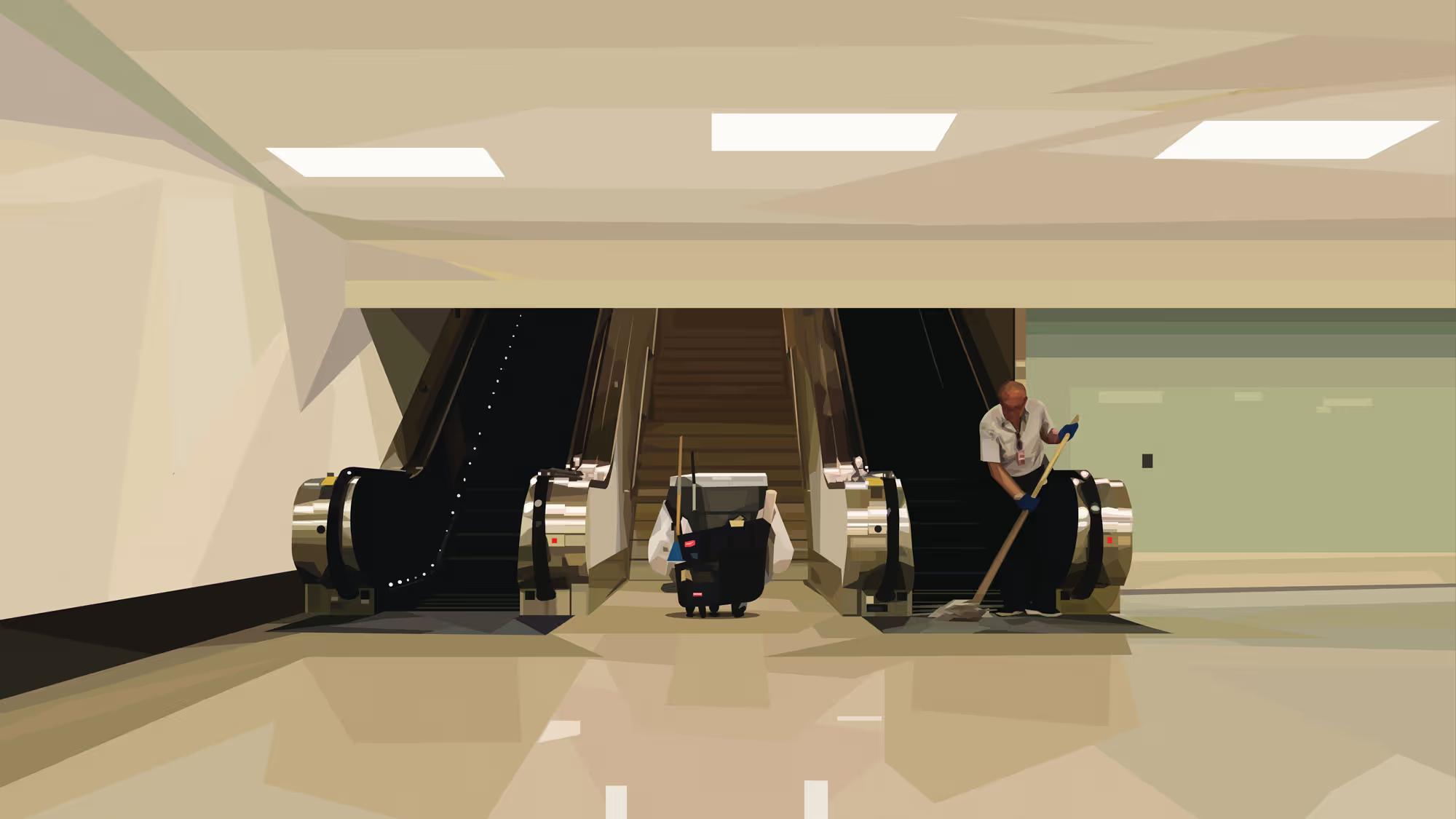
These experiments led Yun into deeper philosophical reflections on language, visual representation, and emotional resonance. Prompt-driven AI reimaginings encouraged him to contemplate the subtle interplay between descriptive language and visual outcomes. Yun questions the seemingly intuitive yet opaque nature of emotional descriptors like "lonely," "happy," or "melancholy"—probing how AI interprets these nuances within physical spaces. By analyzing how the AI conceptualizes, for instance, a "lonely parking lot," Yun critically examines the interpretative space between linguistic expression and visual realization.
Beyond aesthetics and conceptual inquiry, Yun also thoughtfully reflects upon resource utilization inherent in this technological collaboration. He considers the environmental and societal impacts - computational power, energy usage, data storage - required by AI-driven artistic processes. Through this lens, SPACES invites contemplation on broader issues of sustainability, prompting us to question our collective responsibility towards rapidly growing digital infrastructures and their consequences for physical space and resources.
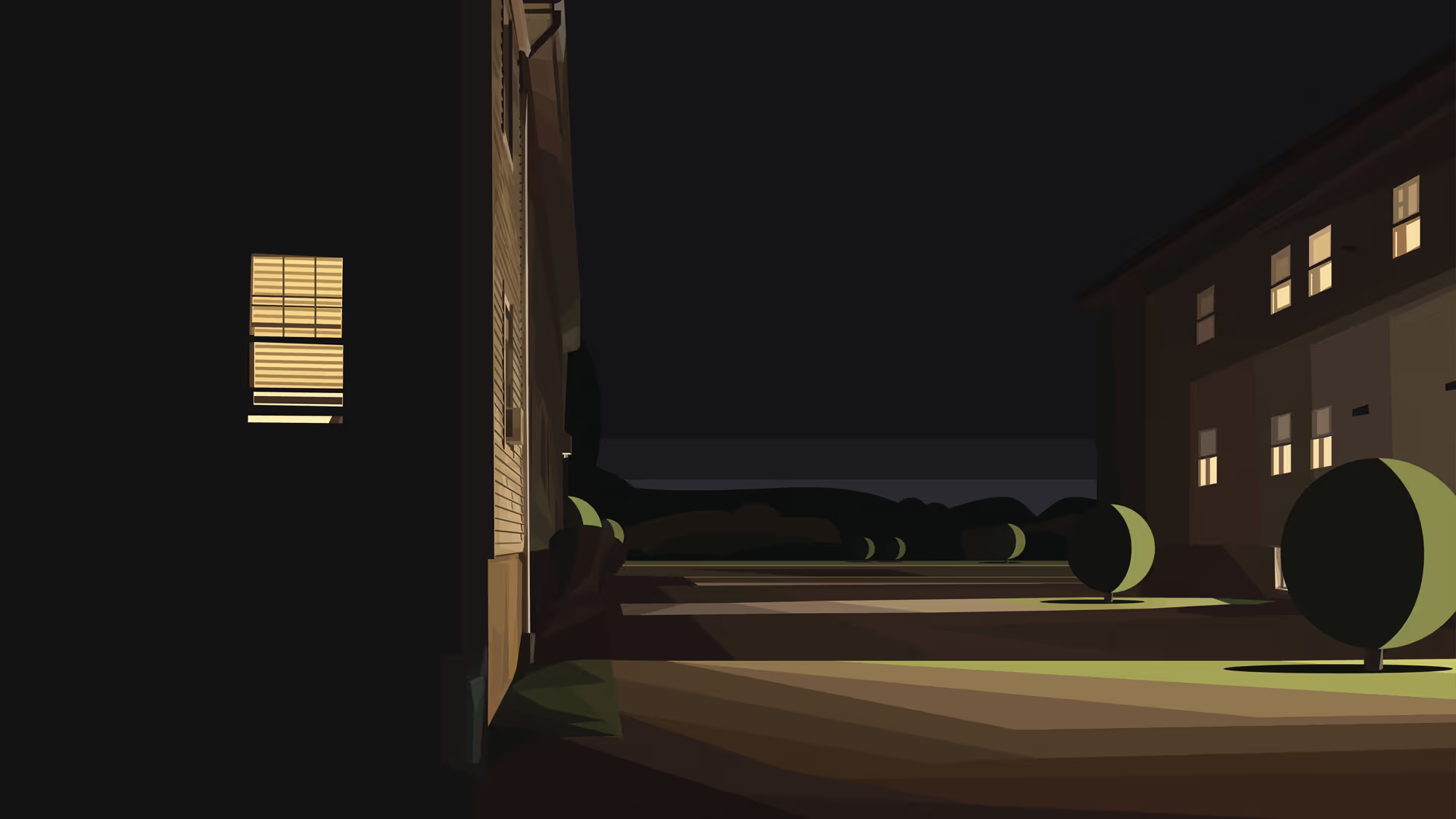
Further deepening his inquiry, Yun integrates sociological and historical contexts into the work. Inspired by foundational texts exploring workplace dynamics—such as Jeremy Myerson and Philip Ross’s The Creative Office and Sally Augustin and Nigel Oseland’s The Science of People and Office Design, Yun emphasizes how physical and virtual office environments continually shape and reshape our social interactions, productivity, and sense of community. He advocates transferring valuable insights learned from decades of evolving office design into the digital spaces that increasingly define our everyday lives.
Drawing from personal experience, Yun reflects on his own childhood visits to his father’s workplace - cubicles within vast office buildings that symbolized adult accomplishment. Over the years, he observed these architectural narratives shift profoundly, responding to technological advances, economic cycles, and societal demands. These memories resonate deeply within SPACES, imbuing Yun’s exploration of contemporary architecture and digital transformation with a subtle autobiographical layer.
Ultimately, Grant Yun’s SPACES is a meditation on the continuous dialogue between humanity, technology, and the built environment. By seamlessly merging physical observations with AI-driven creativity, Yun invites viewers to critically reflect on their own evolving relationships to spaces, both tangible and virtual, challenging us to reconsider how these shifting environments shape identity, culture, and our collective future.



b. 1996, USA
Grant Riven Yun is an American-Korean digital artist renowned for his minimalist vector illustrations that capture everyday scenes with a nostalgic and contemplative essence. Born in San Jose, California, Yun is currently based in Milwaukee, Wisconsin, where he balances his artistic pursuits with medical studies. His unique style, often described as "Neo-Precisionism," draws inspiration from early 20th-century painters, blending traditional aesthetics with contemporary digital techniques.
Yun's journey into digital art began during his college years at the University of Wisconsin in Madison, where he initially experimented with Microsoft PowerPoint to create his first works. Over time, he refined his craft, transitioning to more sophisticated tools and developing a distinctive visual language characterized by clean lines, muted color palettes, and serene compositions. His artworks often depict mundane moments—such as drives home from work or quiet suburban streets—inviting viewers to find beauty in the ordinary. Yun's work has garnered significant attention in both the digital and traditional art worlds. He has collaborated with esteemed institutions such as the Museum of Modern Art (MoMA) and has exhibited internationally, including a solo show titled "Growing Up" in Seoul, South Korea, in 2024. His pieces have also been featured in prominent auctions and exhibitions, reflecting his rising prominence as a contemporary artist.
Through his art, Grant Riven Yun continues to explore the interplay between simplicity and depth, encouraging viewers to reflect on the subtle narratives embedded within everyday life.


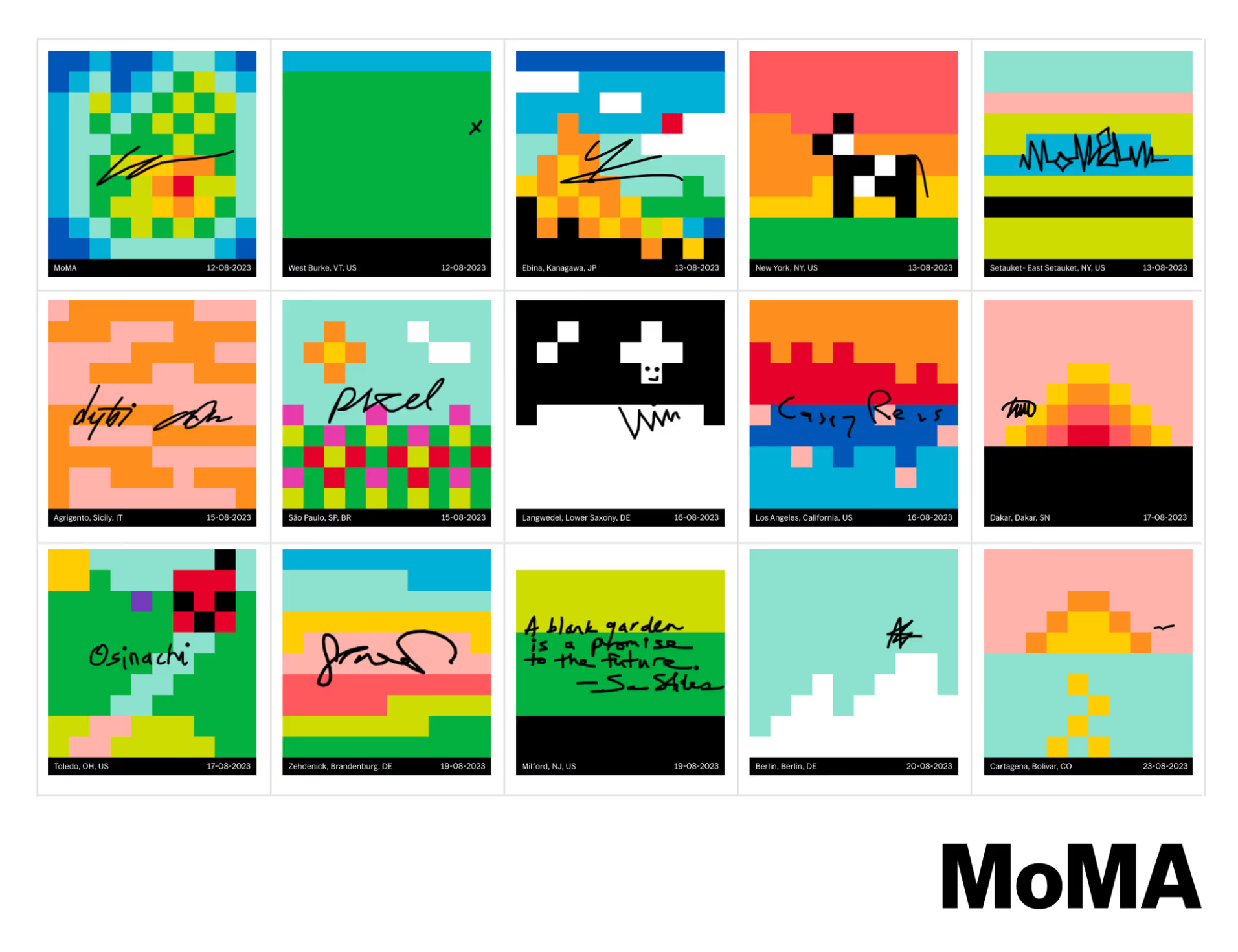
Postcard: Collaboration and Creativity on Blockchain
Postcard: Collaboration and Creativity on Blockchain
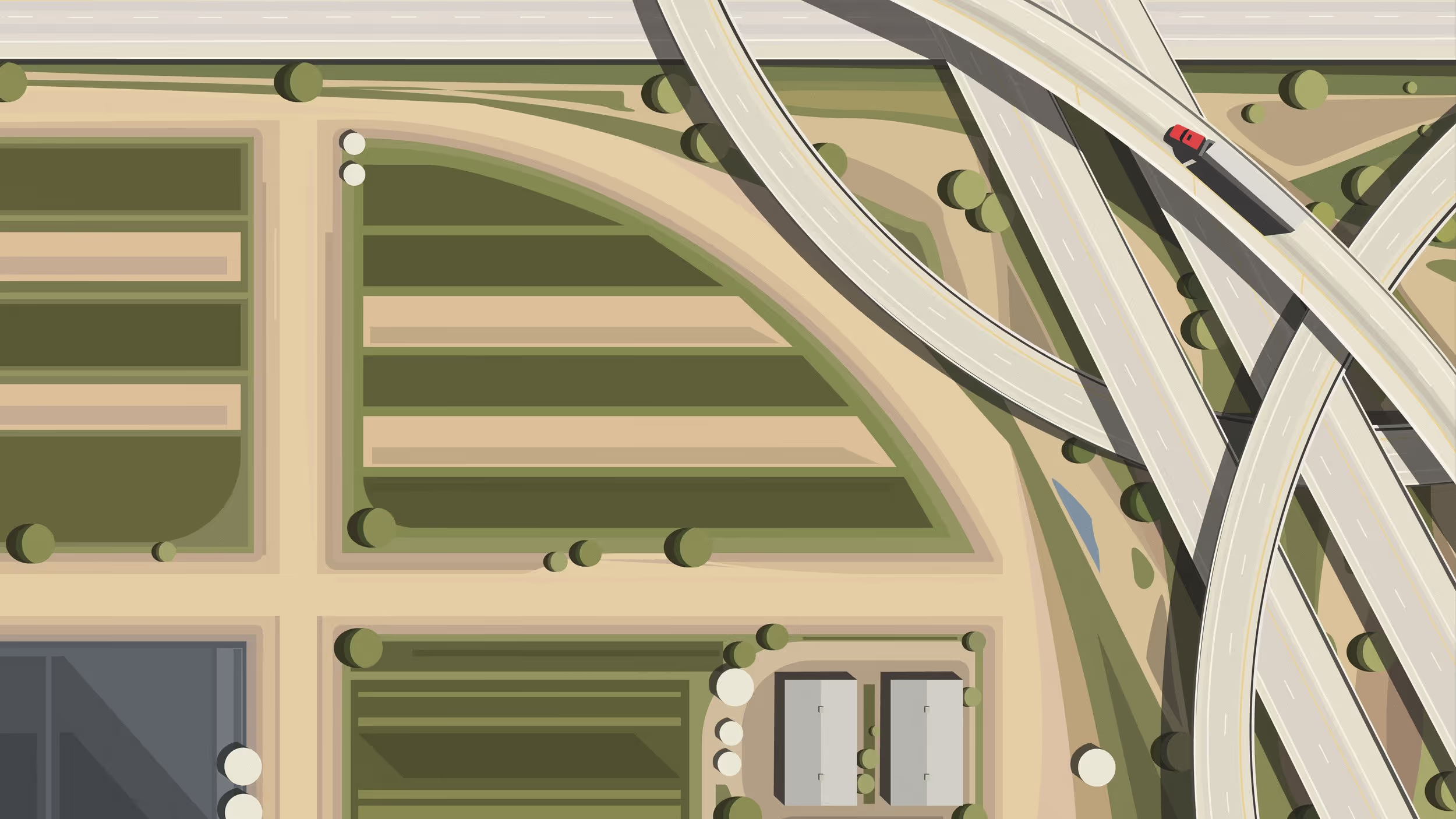
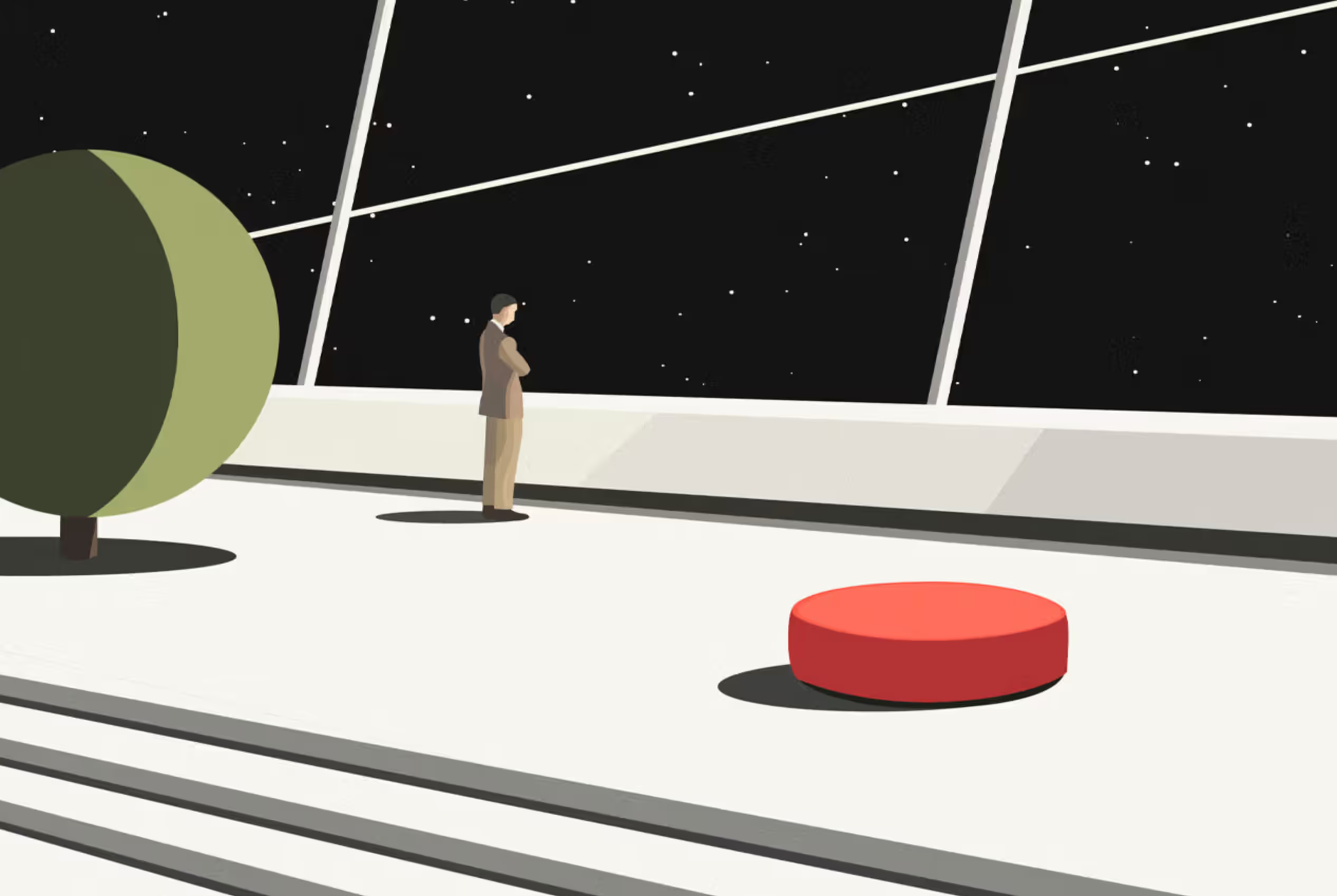

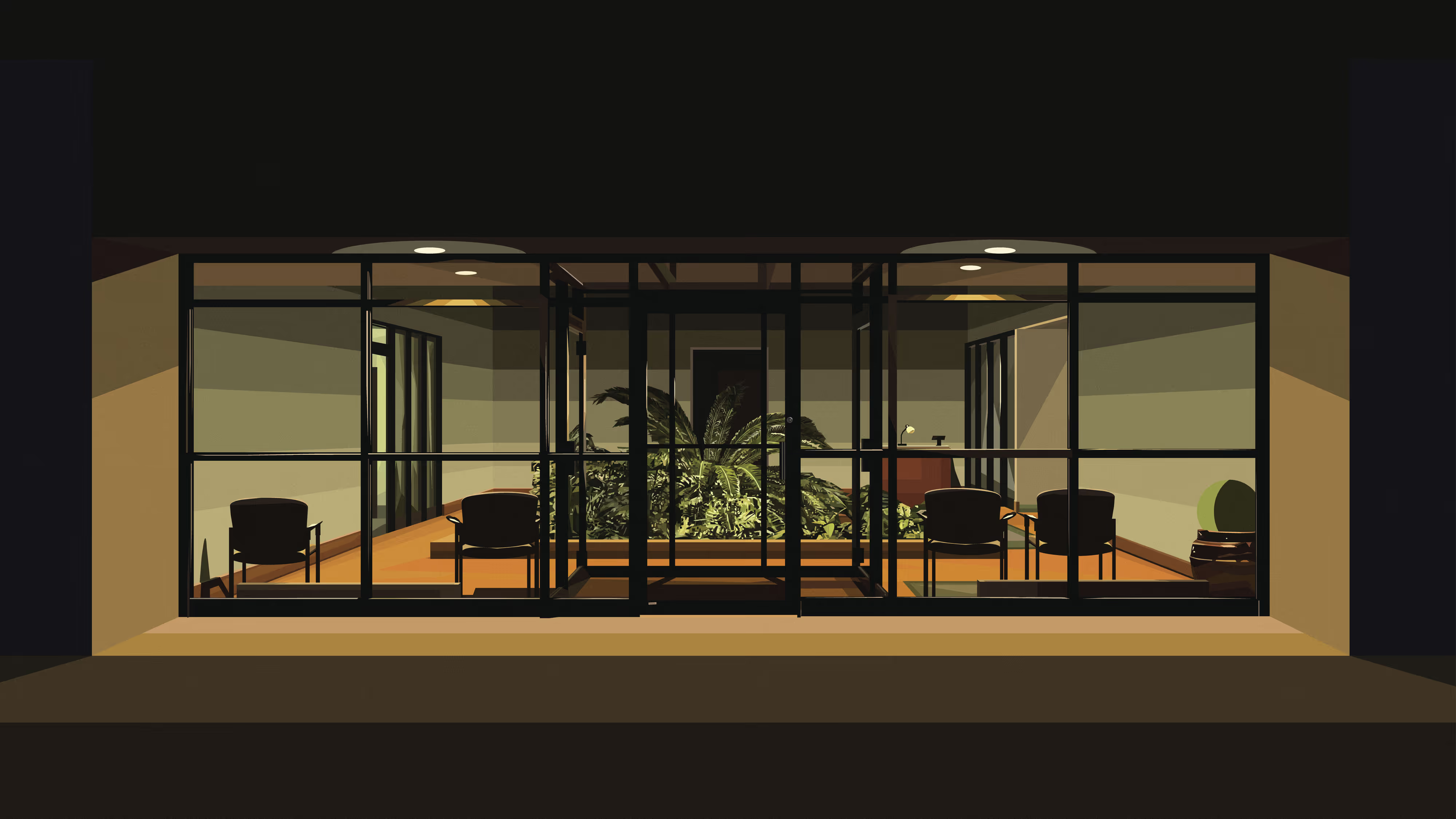













SPACES, Grant Yun’s latest body of work, thoughtfully investigates the profound transformations in our built environments driven by technological innovation, automation, and shifting labor paradigms. Created over several years, Yun’s vector-based illustrations reflect critically upon how exponential advances in artificial intelligence, remote work, digitization, and data infrastructure have reshaped the relationships between humanity, productivity, and physical space.
Throughout the past century, society’s evolving needs have radically altered urban and suburban landscapes, rapidly changing how we interact with our surroundings and redefining what we deem essential. Yun specifically highlights the rise, and subsequent questioning of commercial office spaces, once icons of economic vitality, now increasingly symbols of ambiguity. As artificial intelligence and digitization blur the boundaries between work, identity, and culture, Yun raises critical questions about value: How will physical spaces retain their relevance in an increasingly virtual world? Who benefits from this profound shift, and who is left behind? What does this mean for our collective understanding of ownership, identity, and productivity?

Yun’s creative methodology is deeply rooted in photographic observation and technologically mediated reinterpretation. Beginning in 2014, Yun captured thousands of photographs across the United States using various cameras and personal devices. These photographic archives became foundational references, informing his meticulously crafted illustrations. However, marking a significant evolution in his practice, Yun began collaborating directly with artificial intelligence, exploring how commercially available AI models could enhance, challenge, and reinterpret his visual and conceptual vocabulary.
Describing this technique as "AI sketching," Yun utilized text-to-image, image-to-image, and image-to-text methodologies, continuously refining his works through iterative exchanges with machine intelligence. This process yielded unexpected insights into how human perception, biases, and memory shape interpretations of architectural and spatial elements. Yun’s distinctive style, balancing minimalism and photorealism, purposefully leaves interpretative space for viewers’ imaginations, mirroring the very principles of AI-generated output. By deliberately ceding partial artistic control to artificial intelligence, Yun explores how computational perspectives reflect our human assumptions about space, mood, and narrative.



These experiments led Yun into deeper philosophical reflections on language, visual representation, and emotional resonance. Prompt-driven AI reimaginings encouraged him to contemplate the subtle interplay between descriptive language and visual outcomes. Yun questions the seemingly intuitive yet opaque nature of emotional descriptors like "lonely," "happy," or "melancholy"—probing how AI interprets these nuances within physical spaces. By analyzing how the AI conceptualizes, for instance, a "lonely parking lot," Yun critically examines the interpretative space between linguistic expression and visual realization.
Beyond aesthetics and conceptual inquiry, Yun also thoughtfully reflects upon resource utilization inherent in this technological collaboration. He considers the environmental and societal impacts - computational power, energy usage, data storage - required by AI-driven artistic processes. Through this lens, SPACES invites contemplation on broader issues of sustainability, prompting us to question our collective responsibility towards rapidly growing digital infrastructures and their consequences for physical space and resources.

Further deepening his inquiry, Yun integrates sociological and historical contexts into the work. Inspired by foundational texts exploring workplace dynamics—such as Jeremy Myerson and Philip Ross’s The Creative Office and Sally Augustin and Nigel Oseland’s The Science of People and Office Design, Yun emphasizes how physical and virtual office environments continually shape and reshape our social interactions, productivity, and sense of community. He advocates transferring valuable insights learned from decades of evolving office design into the digital spaces that increasingly define our everyday lives.
Drawing from personal experience, Yun reflects on his own childhood visits to his father’s workplace - cubicles within vast office buildings that symbolized adult accomplishment. Over the years, he observed these architectural narratives shift profoundly, responding to technological advances, economic cycles, and societal demands. These memories resonate deeply within SPACES, imbuing Yun’s exploration of contemporary architecture and digital transformation with a subtle autobiographical layer.
Ultimately, Grant Yun’s SPACES is a meditation on the continuous dialogue between humanity, technology, and the built environment. By seamlessly merging physical observations with AI-driven creativity, Yun invites viewers to critically reflect on their own evolving relationships to spaces, both tangible and virtual, challenging us to reconsider how these shifting environments shape identity, culture, and our collective future.



b. 1996, USA
Grant Riven Yun is an American-Korean digital artist renowned for his minimalist vector illustrations that capture everyday scenes with a nostalgic and contemplative essence. Born in San Jose, California, Yun is currently based in Milwaukee, Wisconsin, where he balances his artistic pursuits with medical studies. His unique style, often described as "Neo-Precisionism," draws inspiration from early 20th-century painters, blending traditional aesthetics with contemporary digital techniques.
Yun's journey into digital art began during his college years at the University of Wisconsin in Madison, where he initially experimented with Microsoft PowerPoint to create his first works. Over time, he refined his craft, transitioning to more sophisticated tools and developing a distinctive visual language characterized by clean lines, muted color palettes, and serene compositions. His artworks often depict mundane moments—such as drives home from work or quiet suburban streets—inviting viewers to find beauty in the ordinary. Yun's work has garnered significant attention in both the digital and traditional art worlds. He has collaborated with esteemed institutions such as the Museum of Modern Art (MoMA) and has exhibited internationally, including a solo show titled "Growing Up" in Seoul, South Korea, in 2024. His pieces have also been featured in prominent auctions and exhibitions, reflecting his rising prominence as a contemporary artist.
Through his art, Grant Riven Yun continues to explore the interplay between simplicity and depth, encouraging viewers to reflect on the subtle narratives embedded within everyday life.



Postcard: Collaboration and Creativity on Blockchain
Postcard: Collaboration and Creativity on Blockchain





SPACES, Grant Yun’s latest body of work, thoughtfully investigates the profound transformations in our built environments driven by technological innovation, automation, and shifting labor paradigms. Created over several years, Yun’s vector-based illustrations reflect critically upon how exponential advances in artificial intelligence, remote work, digitization, and data infrastructure have reshaped the relationships between humanity, productivity, and physical space.
Throughout the past century, society’s evolving needs have radically altered urban and suburban landscapes, rapidly changing how we interact with our surroundings and redefining what we deem essential. Yun specifically highlights the rise, and subsequent questioning of commercial office spaces, once icons of economic vitality, now increasingly symbols of ambiguity. As artificial intelligence and digitization blur the boundaries between work, identity, and culture, Yun raises critical questions about value: How will physical spaces retain their relevance in an increasingly virtual world? Who benefits from this profound shift, and who is left behind? What does this mean for our collective understanding of ownership, identity, and productivity?

Yun’s creative methodology is deeply rooted in photographic observation and technologically mediated reinterpretation. Beginning in 2014, Yun captured thousands of photographs across the United States using various cameras and personal devices. These photographic archives became foundational references, informing his meticulously crafted illustrations. However, marking a significant evolution in his practice, Yun began collaborating directly with artificial intelligence, exploring how commercially available AI models could enhance, challenge, and reinterpret his visual and conceptual vocabulary.
Describing this technique as "AI sketching," Yun utilized text-to-image, image-to-image, and image-to-text methodologies, continuously refining his works through iterative exchanges with machine intelligence. This process yielded unexpected insights into how human perception, biases, and memory shape interpretations of architectural and spatial elements. Yun’s distinctive style, balancing minimalism and photorealism, purposefully leaves interpretative space for viewers’ imaginations, mirroring the very principles of AI-generated output. By deliberately ceding partial artistic control to artificial intelligence, Yun explores how computational perspectives reflect our human assumptions about space, mood, and narrative.



These experiments led Yun into deeper philosophical reflections on language, visual representation, and emotional resonance. Prompt-driven AI reimaginings encouraged him to contemplate the subtle interplay between descriptive language and visual outcomes. Yun questions the seemingly intuitive yet opaque nature of emotional descriptors like "lonely," "happy," or "melancholy"—probing how AI interprets these nuances within physical spaces. By analyzing how the AI conceptualizes, for instance, a "lonely parking lot," Yun critically examines the interpretative space between linguistic expression and visual realization.
Beyond aesthetics and conceptual inquiry, Yun also thoughtfully reflects upon resource utilization inherent in this technological collaboration. He considers the environmental and societal impacts - computational power, energy usage, data storage - required by AI-driven artistic processes. Through this lens, SPACES invites contemplation on broader issues of sustainability, prompting us to question our collective responsibility towards rapidly growing digital infrastructures and their consequences for physical space and resources.

Further deepening his inquiry, Yun integrates sociological and historical contexts into the work. Inspired by foundational texts exploring workplace dynamics—such as Jeremy Myerson and Philip Ross’s The Creative Office and Sally Augustin and Nigel Oseland’s The Science of People and Office Design, Yun emphasizes how physical and virtual office environments continually shape and reshape our social interactions, productivity, and sense of community. He advocates transferring valuable insights learned from decades of evolving office design into the digital spaces that increasingly define our everyday lives.
Drawing from personal experience, Yun reflects on his own childhood visits to his father’s workplace - cubicles within vast office buildings that symbolized adult accomplishment. Over the years, he observed these architectural narratives shift profoundly, responding to technological advances, economic cycles, and societal demands. These memories resonate deeply within SPACES, imbuing Yun’s exploration of contemporary architecture and digital transformation with a subtle autobiographical layer.
Ultimately, Grant Yun’s SPACES is a meditation on the continuous dialogue between humanity, technology, and the built environment. By seamlessly merging physical observations with AI-driven creativity, Yun invites viewers to critically reflect on their own evolving relationships to spaces, both tangible and virtual, challenging us to reconsider how these shifting environments shape identity, culture, and our collective future.



b. 1996, USA
Grant Riven Yun is an American-Korean digital artist renowned for his minimalist vector illustrations that capture everyday scenes with a nostalgic and contemplative essence. Born in San Jose, California, Yun is currently based in Milwaukee, Wisconsin, where he balances his artistic pursuits with medical studies. His unique style, often described as "Neo-Precisionism," draws inspiration from early 20th-century painters, blending traditional aesthetics with contemporary digital techniques.
Yun's journey into digital art began during his college years at the University of Wisconsin in Madison, where he initially experimented with Microsoft PowerPoint to create his first works. Over time, he refined his craft, transitioning to more sophisticated tools and developing a distinctive visual language characterized by clean lines, muted color palettes, and serene compositions. His artworks often depict mundane moments—such as drives home from work or quiet suburban streets—inviting viewers to find beauty in the ordinary. Yun's work has garnered significant attention in both the digital and traditional art worlds. He has collaborated with esteemed institutions such as the Museum of Modern Art (MoMA) and has exhibited internationally, including a solo show titled "Growing Up" in Seoul, South Korea, in 2024. His pieces have also been featured in prominent auctions and exhibitions, reflecting his rising prominence as a contemporary artist.
Through his art, Grant Riven Yun continues to explore the interplay between simplicity and depth, encouraging viewers to reflect on the subtle narratives embedded within everyday life.



Postcard: Collaboration and Creativity on Blockchain
Postcard: Collaboration and Creativity on Blockchain

